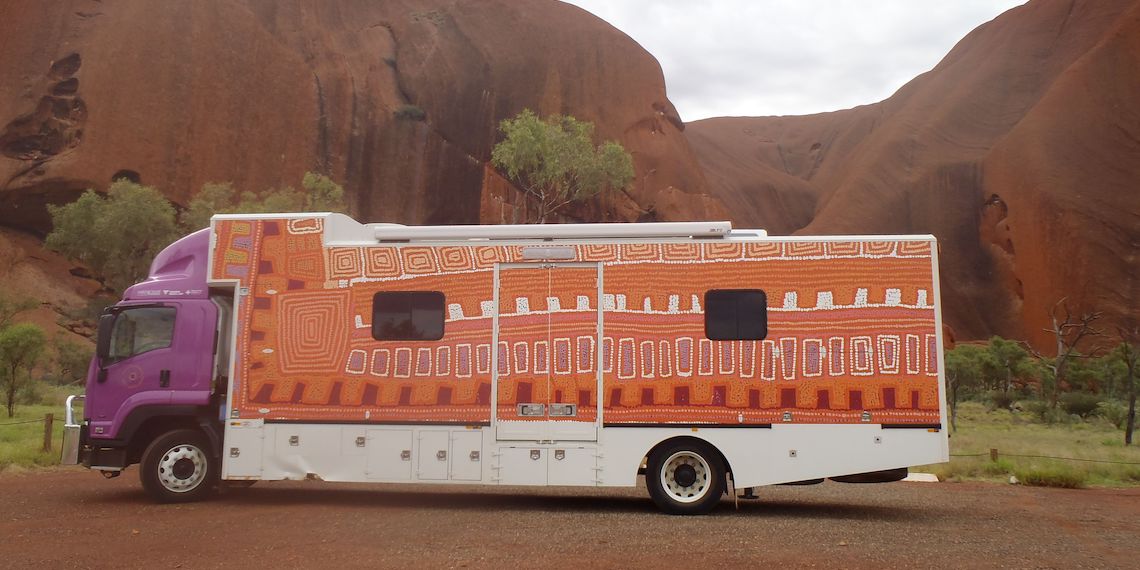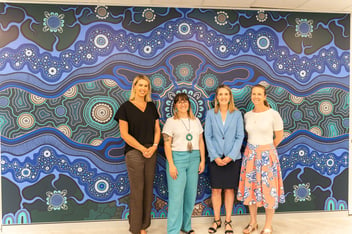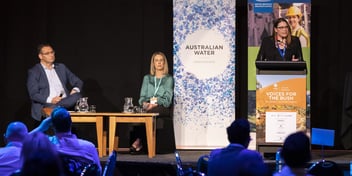How water provision is helping to close the Indigenous healthcare gap

Receiving healthcare on Country is crucial to keeping communities together, but the water required isn’t always available. One initiative is trying to change that, highlighting just how much progress is possible.
At last year’s AWA/WSAA Voices for the Bush Conference in Alice Springs, National Aboriginal Community Controlled Health Organisation CEO Patricia Turner AM laid down the gauntlet to improve remote water access.
“The National Agreement [on Closing the Gap] signed in 2020 has a 10-year timeframe, and we are already two years in,” she said. “Few of the 17 targets are on track to meet their trajectories and some have worsened over time. These targets will neither move quickly, nor in the right direction, until all the structural impediments are dealt with.”
One area where poor water quality is coming into sharp focus is healthcare on Country, where it can have devastating impacts on the health outcomes and quality of life for Aboriginal people.
Purple House, a non-profit health service, owned by First Peoples, providing dialysis treatment in the most remote parts of Australia, is showcasing how innovative approaches to water provision for healthcare can help close the healthcare gap.
Irene Nangala is Chair of Purple House and a dialysis patient from Kintore, a remote Northern Territory community some 600 kilometres west of Alice Springs and 40 kilometres from the border of Western Australia. Nangala said breaking up family and community inspired her to push for dialysis treatment in her community.
‘‘I used to see my sister and brother in renal dialysis. They never returned back home to Kintore,” she said. “We took our old people to go back home because we missed them. Our old people say, ‘We want to go back, we belong to that Country.’”
Nangala has been part of the Purple House from the beginning – but didn’t know she would wind up needing treatment herself. Since starting dialysis in 2013, she has been able to spend her time between Kintore and Alice Springs, advocating for better services for her community as the Central Australian representative on Kidney Health Australia’s national consumer group.
“Because of Purple House, we get to see our grandchildren grow up,” she said. “We can stay strong and share our stories and our culture, and our families don’t have to worry.”
Having experienced the benefits of the program first-hand, Nangala is now helping it spread to service other remote communities.
The benefits are already proving profound, with research from Menzies School of Health Research showing that when people are home on Country for dialysis with family and community, they have fewer hospitalisations and medivacs, a longer life expectancy and better quality of life. For Nangala, that also means simple pleasures such as sleeping outside and smelling the fresh air.
“Sometimes I go and sit with my young sister and go around to my family, sit down and have a little story with them,” she said.
“[It makes] me happy and feel good. I like to go back for singalong. I miss them. I miss going hunting for goannas too, hunting and getting some bush tucker.”
From worst to best
Sarah Brown AM was Purple House’s first employee and recently celebrated 20 years as its CEO. Brown said the organisation was founded by Aboriginal leaders who wanted to start a community-controlled health service to get their people home and into culturally appropriate care.
‘‘In the 1990’s there was an alarming rise in the number of Aboriginal people with advanced chronic kidney disease who were permanently forced into town for dialysis treatment three times a week,” she said. “They lived on the fringes – on someone else’s Country – disconnected from all that was important to them. It led to poor physical and mental health outcomes for patients.”
Elders were also missing from communities where they were needed to pass on Cultural Knowledge and provide leadership, which fractured families and social cohesion in communities.
‘‘A lack of water security and water quality has a profound impact on people’s capacity to stay well and hydrated,” Brown said. “When this is compromised, people’s kidneys won’t stay healthy and they’ll be at greater risk of kidney disease. It’s also tough to expect people to choose water over soft drink when it tastes terrible, is poor quality and, in numerous remote communities, is inconsistently available. Those issues are also a major barrier to providing remote dialysis services since each treatment requires significant amounts of high-quality water.’’
Brown said Purple House’s unique model and constant innovation has helped improve health outcomes for dialysis patients in Central Australia, going from the worst to the best nationally.
‘‘Indigenous patients here are living longer on dialysis than the average non-Indigenous person in a metro city on the east coast,” she said.
The effects on community and culture are equally extraordinary. Elders are able to pass on critical knowledge about culture that would otherwise be lost.
‘‘In 2013, we took the Purple Truck, our mobile dialysis unit, to Mutijulu so the late Mr Nipper could go home for a visit,” Brown said. “While he was there, he got to go out with rangers – in a helicopter, no less – to rediscover lost water holes that he had visited as a child. The rangers had heard stories, but had never been able to find them.”
A long way to go
Northern Territory Senator Malarndirri McCarthy said having access to good healthcare and services on Country is paramount to the health and wellbeing of Aboriginal people.
“Being away from Country can have physical, social and economic impacts on many remote First Nations people who can spend extended periods of time away from Country, family and community,” she said. “Purple House has been a game changer in treating kidney disease remotely and its staff have made a huge, positive difference to the lives of dialysis patients in the bush.”
McCarthy said that while organisations such as Purple House are reducing the overall impact that kidney disease has on Aboriginal communities, there is still work to be done when it comes to improving access to safe water.
“Over 500 First Nations communities do not have regular water quality testing. Drinking water supplies in some First Nations communities in remote areas may have levels of uranium, arsenic, fluoride and nitrate that exceed allowable levels in the Australian Drinking Water Guidelines,” she said.
Late last year, the Federal Government broadened the remit of the National Water Grid Investment Framework to include funding for essential town water supplies in remote communities, McCarthy said.
“Changes to the framework will allow funding to improve water security for First Nations communities, increasing resilience to climate change and supporting economic opportunities,” she said.
“All Australians should be able to expect access to safely managed drinking water and sanitation services in line with Sustainable Development Goal 6, and our government is committed to make this a reality.”


